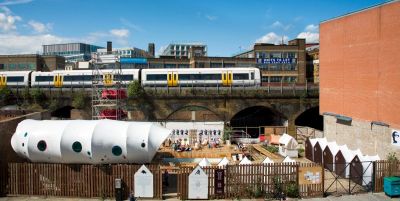
The zone of freedom lives at the edges of wilderness, at the periphery of industrial areas and council estates, along train tracks and desolate lands, in factories and buildings that escape central agendas to become spontaneous playgrounds, and sometimes also on sacred lands.
Free Stonehenge encampment, UK

Enchanted forest, Texas - 2006 © Alec Soth
But they don't.
Once that breathing zone is reduced by squatting laws or controlled by regeneration politics, some leave for the Never never lands.
Once that breathing zone is reduced by squatting laws or controlled by regeneration politics, some leave for the Never never lands.
![[IMG]](http://i7.photobucket.com/albums/y297/Jezza101/17.jpg)
The last convoy to Stonehenge - Battle of the Beanfield, UK - 1984
The spaces of play and freedom become flexible, resilient, temporary; communities live in transient mode to avoid the encirclement.
The free parties get more organised, less easy to track (endless hunts for remote gatherings, truck convoys at the far ends of western and eastern borders).

Investigating new lands, new living patterns provoke the context we aim to flee - Michael Reynolds spends as much time by-passing building laws to keep his earthships legalised than building them - but pioneers open the doors to social change. Ignoring the alienation of the state machine, the 60's give birth to resilient architectural practices.
Buckminster Fuller informs the building of Drop city, a temporary settlement built from scratch, Archigram influences a socially engaged architecture for a playful city. Freedom activists, artistic and intellectual movements investigate new forms of deterritorialization to preserve autonomous zones in the city.
Architectural collectives like Exyzt devise urban spaces that invest the zones of control : benefiting from a pause in the development frenzy, their events replicate, duplicate, multiply themselves, disappear and re-appear, putting the off-grid back on the map. Their temporary appearances keep political agendas, advertising and consumerism off site while giving space for play and gathering.
At Campo Boario in Roma, Stalker opens a borderless, visa free zone to homeless groups and transitory immigrants. A space that temporarily succeeds to abolish the rules imposed by Shengen (a legal space, 'illegally squatted but legitimised by institutional and media support').
In order to escape the societal rules and spatial boundaries of the state, in essence, the zone of freedom remains a fleeting momentum charged with the spirit of now, an urban void filled with shared experiences and memories.
Campo Boario - Roma 1999 © Stalker








